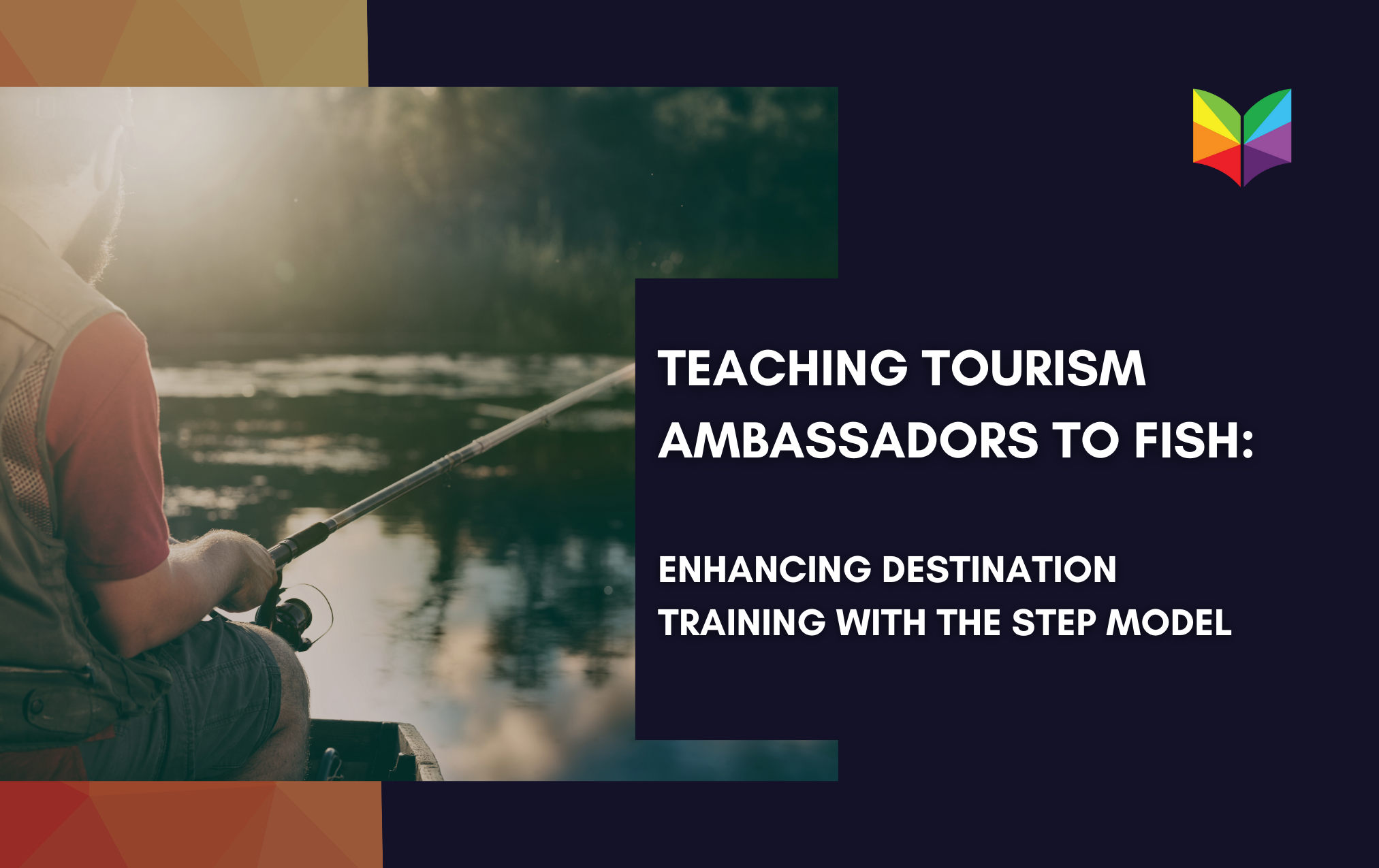
Teaching Tourism Ambassadors to Fish: Enhancing Destination Training with the STEP Model
In the world of destination marketing and visitor education, there's a timeless principle that guides effective learning: "You can give a person a fish, or you can teach them to fish." This concept is not just about providing immediate answers but empowering individuals with the skills to find and utilize information independently. When applied to destination training, this principle helps tourism professionals become adept at navigating and leveraging digital resources, ultimately benefiting both them and the visitors they assist.
Why Teach Visitors to Fish?
Instead of merely handing out a visitor's guide and expecting memorization, we aim to guide users through your website to discover attractions, events, dining options, and more. This approach ensures that they can independently access and utilize the information you provide, enhancing their overall experience.
The STEP Model: A Practical Approach
The STEP model—comprising Introduce, Task, Environment, and Practical Scenarios—provides a structured method for effective training. Here’s how you can integrate each step with practical examples:
-
Introduce the Subject
You can begin by presenting the core content, such as local attractions or events. For example, if your destination has a variety of museums, could you start with a promotional video showing highlights from these museums? Alternatively, could you provide a detailed text lesson explaining the unique features of each museum, including opening hours, special exhibits, and visitor tips?
Example: "Welcome to our destination's museums module. Here, you'll learn about our top attractions, including the Downtown Art Museum and the Historic Railroad Museum. Watch this short video to get an overview of the fascinating exhibits and experiences each museum offers."
-
Create a Task
Design a specific task that encourages learners to interact with your website. For instance, ask them to visit your events calendar and find a local festival happening this weekend. They should then share their findings with the group, explaining why they chose that event and what makes it appealing.
Example: "In the next lesson, go to our website’s events calendar and find the 'Spring Music Festival' scheduled for this weekend. Share details about the festival, such as its location, main performers, and any special activities. Discuss why you think this event would be a great recommendation for a tourist."
-
Provide the Environment
Allow learners to practice the task within a controlled environment. Incorporate live pages from your website into the lesson so that participants can explore and complete assignments directly within the course. For instance, embed a link to the live events calendar and let them browse through it as they complete their tasks.
Example: "Use the embedded link to our live events calendar within this lesson. You can just navigate through the calendar to find the 'Spring Music Festival' and other events. This hands-on approach will help you become familiar with how to use our website’s resources effectively."
-
Utilize Practical Scenarios
Present scenarios that simulate real-world situations requiring the application of their knowledge. For example, pose a question like, "A family of four is visiting for the weekend. Which of the attractions listed on our site would you recommend for them?" Could you provide multiple-choice options with details about each attraction and use these scenarios to reinforce correct recommendations?
Example: "Imagine a family of four is visiting our destination for the weekend. They are interested in cultural activities and outdoor fun. Based on the attractions listed on our website, which of these would you recommend: A) The Downtown Art Museum, B) The City Zoo, C) The Historic Railroad Museum, or D) The Botanical Gardens? Discuss your choice and explain why it would be a great fit for the family."
Optimizing Your Training Flow
To enhance the learning experience, could you consider separating the wrap-up activities into their chapter? This chapter can include the survey, congratulations, and certificate sharing, keeping it distinct from the main content modules. This separation ensures a smoother flow and helps learners easily navigate through the different sections of the training.
Conclusion
By incorporating the STEP model into your destination training programs, you're not just disseminating information—you're equipping tourism professionals with the skills to access and utilize your digital resources independently. This approach fosters a more engaging and interactive learning experience, ultimately benefiting your destination's success and ensuring that your audience is well-prepared to assist visitors effectively.

Leave a comment